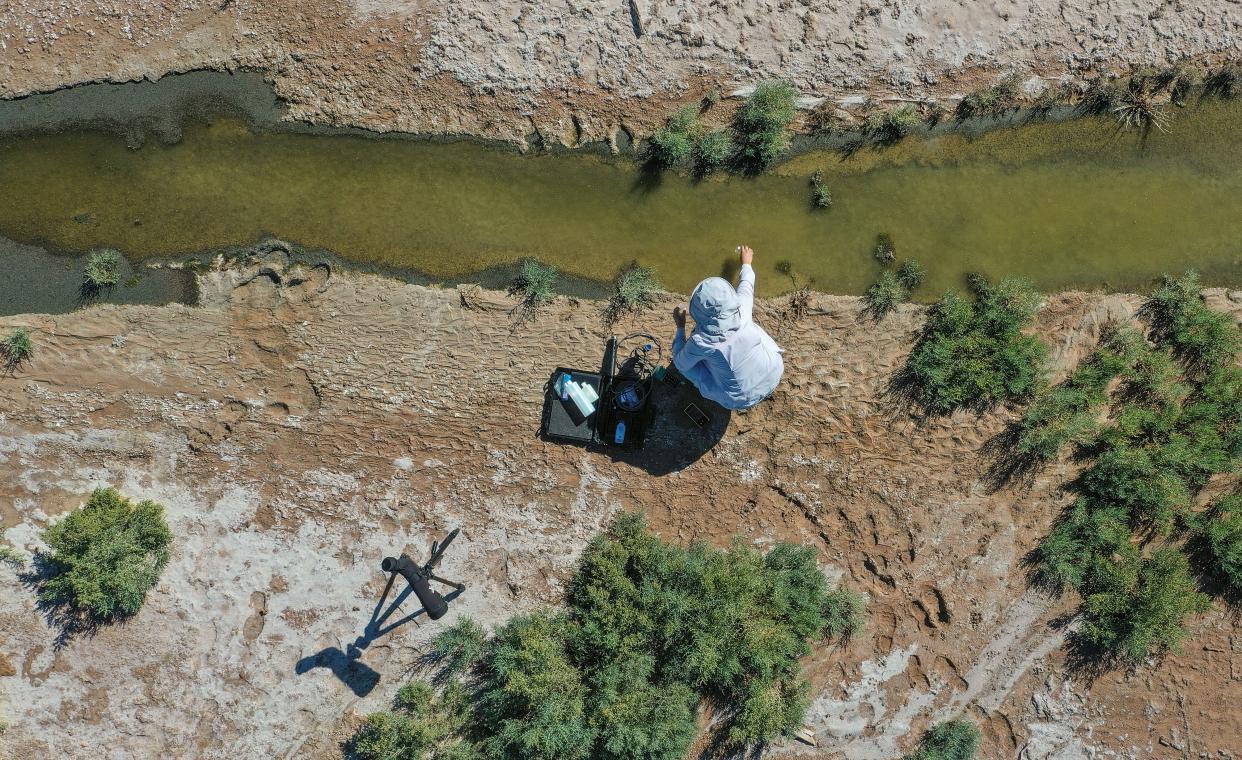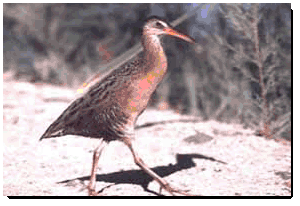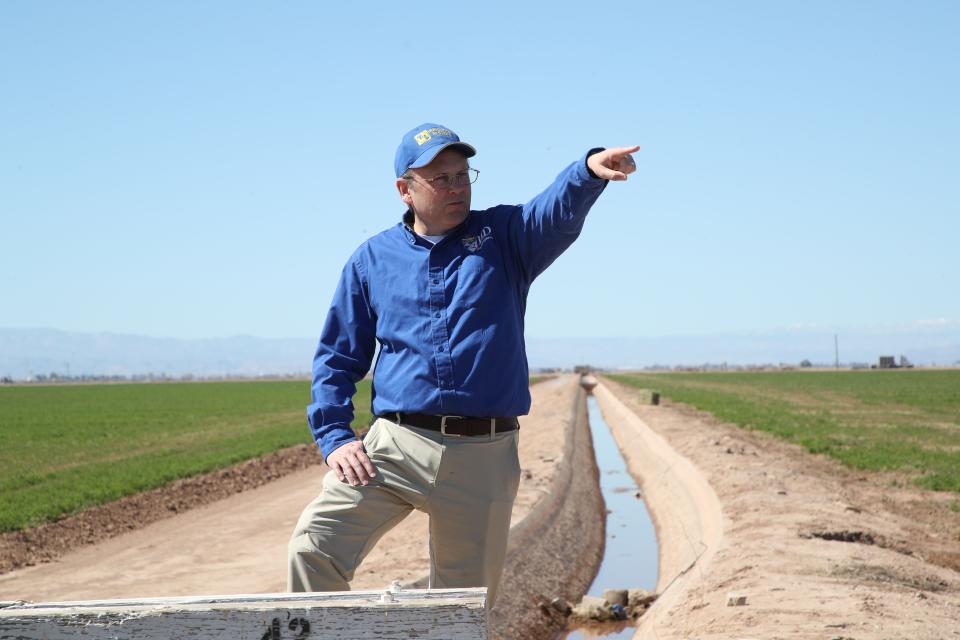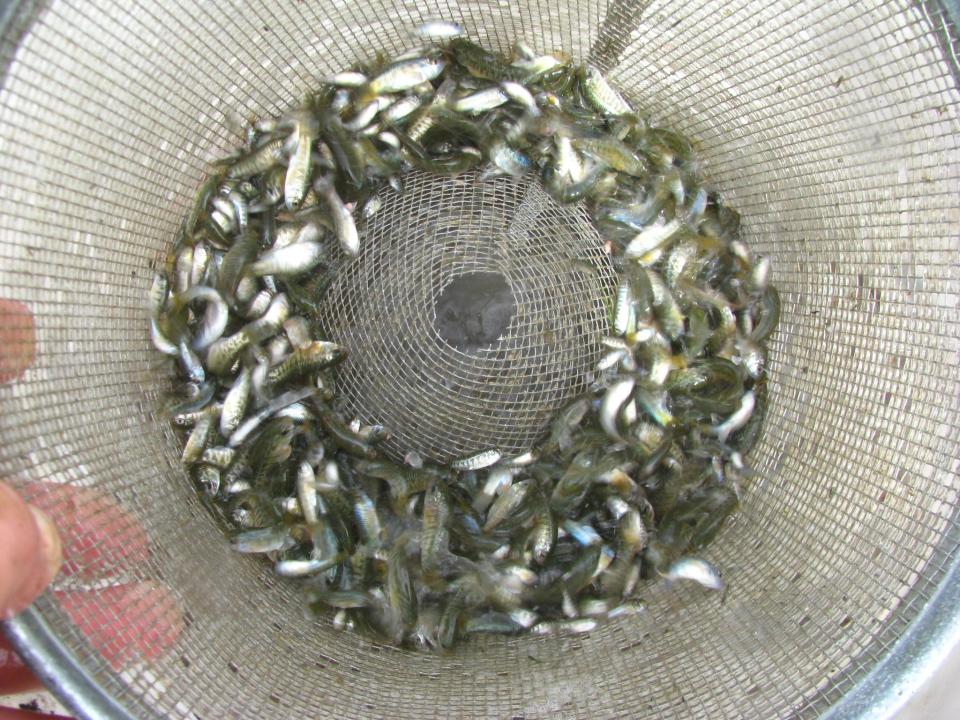Colorado River: Bill would allow 'taking' of rare pupfish, desert birds to get deal done

Imperial Irrigation District officials have figured out how to surmount a key hurdle to complete a Colorado River conservation deal worth nearly $800 million: pushing to have California legislators quickly pass a bill that would give them the power to kill endangered fish and birds, or in bureaucratic parlance, to "take" them.
District staff, the bill's sponsor and environmentalists say that likely wouldn't occur, thanks to funding to create habitat elsewhere, and due to backstop federal species protections that are actually stronger than the state's. But it is a counter-intuitive piece of lawmaking that has upset one longtime critic.
What's driving the legislation are a tiny desert pupfish and two types of birds, all nearing extinction, which have found unlikely refuge in the Imperial Valley's concrete drainage channels and marshy areas by the fast-drying Salton Sea. IID has agreed to use a whopping 800,000 acre-feet less river water through 2026, in exchange for hefty payments from the U.S. Department of Interior. Those savings mostly would be achieved by seasonal fallowing of alfalfa and other perennial crops by area farmers, who also would be paid.
But the drains and marshes providing vital habitat to the fish and birds could dry up if that much water is held back. That could harm or kill the species, which is forbidden under the California and U.S. Endangered Species Acts.
To get around the landmark laws, a new exemption deal piggybacking on an old one is now moving on an "urgency" basis though the California legislature. Dubbed Assembly Bill 2610, and authored by Assemblymember Eduardo Garcia, D-Coachella, it would allow the "take" of the silvery, finger-length pupfish; tiny, shy California black rails best known by their unique call; and Yuma Ridgeway's rails, a grey and cinnamon colored marsh bird the size of a chicken.

So what does "take" mean, in plain English?
"Under California law, 'take' really means killing or causing the death of (a protected animal), so for example, a pup fish, if all of the water was gone, that would be a take. But federal law is different, it's much broader. It includes harm and harassment and changes to the habitat. So they're very, very different standards," said Lisa Belenky, senior counsel for the Center for Biological Diversity, who said her organization and others have scrutinized Colorado River agreements between federal officials and different agencies and tribes in numerous states for potential impacts on species. She said they're not too concerned about this one.
"You know, when you say 'take or kill' that sounds very, very harsh," said Garcia. He said environmentalists would not be supporting the effort if that was its true intent. Rather than going through a more time-consuming effort to craft a brand-new bill with extended hearings and committee approvals, AB 2610 would amend a flexible conservation agreement that allows limited "take" in a portion of a controversial 2003 "quantification settlement agreement," under which IID is paid to divert another big piece of its legal Colorado River entitlement to suburban San Diego. IID holds among the oldest and by far the largest rights to water from the river.
"It just aligns within the authority that already exists," said Garcia.
Garcia noted it could help free up another $175 million in federal taxpayer money to continue construction of marshes and ponds elsewhere near the Salton Sea for the species. Those funds are tied to completion of the water conservation agreement.
"We need to keep the momentum going," he said, explaining 4,000 aces of new wetlands being built by state contractors are 90% complete, and another 4,000 acres or more could possibly be built with the additional funds.
IID vice president JB Hamby, who is also California's lead negotiator on Colorado River supply, agreed. He said the agency and farmers have been ready to conserve water for the entire system, and to construct better habitat as part of a possible long-term agreement for management of river resources after 2026. An entire year slipped away without a short-term agreement between the district and Interior's U.S. Bureau of Reclamation, and, he said, the California legislation is a pro-active effort to help clear up the logjam.
"Farmers and the district are very eager to participate in some of these programs. We are motivated to be in a position to take a leadership position on the Colorado River," he said. "But the wildlife agencies have identified concerns that they would like to see addressed related to these two birds and this one fish that reside in and around IDs agricultural drainage - which is a very odd place, particularly for the pup fish, to live, but they thrive there."

He added, "It is very ironic that the largest user and perhaps the most important player in the future of Colorado River matters in coming to grips with climate change and drought ... is precluded by law from doing conservation unless we go out of our way to develop habitat for these very unique species ... No other user on the river has to go through all those hoops."
AB 2610 passed the Assembly on a bipartisan vote on May 2, and needs to be voted on by the state Senate next. If it wins passage there and Gov. Gavin Newsom signs it into law, it would take effect at once.
That upsets a former IID consultant and perennial critic of the agency, Tom Havens, who specializes in private water markets. In a series of emails and an interview, he expressed concerns about both the hurried timeline and some of the language in the bill, including the fact that on paper, it appears to tie IID to a decades old, low-ball figure of $175 per acre-foot for new conservation water.
"WHY does IID fail to fully inform the public about critical matters that will directly affect the lifeblood of Imperial Valley? What is the rush?" Havens said in one email. But IID's Colorado River water manager, Tina Shields, disputed Havens' claims, and said separate contracts would yield IID and area farmers at least $776 per acre-foot.

Environmentalists who keep an eagle eye on imperiled desert species say they're okay with the proposal, particularly if $65 million in state funding that they say is critically needed to keep building and restoring new habitat at the edge of the dwindling Salton Sea also survives in the 2024-25 budget.
"This is a pretty narrow bill, we know how it's going to work, and our biggest issue is making sure the Salton Sea is dealt with," said Kim Delfino, a Sacramento-based consultant who has tracked the sea and the species that depend on it for two decades. "This is is basically something they already had authority to do ... they're just asking to extend that authority."
Still, removing 800,000 acre-feet of water, or 260 billion gallons, could have real impacts on the ground.
She said the pupfish could be moved to new locations, not destroyed, and water officials could wait for nesting seasons by the two bird species to be done before any brush is removed.
"It's not like they're going to go in and start killing a whole bunch of fish and birds," she said.
She, like Belenky, noted there are other federal protections that would also remain in effect.
Feds need to give their approval, too
A state law doesn't override federal protections. Shields with IID said they had prepared a drain water management plan, and that federal biologists were close to beginning a 60 day review of all the arrangements.
A U.S. Bureau of Reclamation spokesman said in an email that while biologists examined and signed off on the effects of water conservation on species in or on the Colorado River itself, included in a final environmental impact report for which a record of decision was issued on Thursday, that isn't the case for the IID area, which begins 80 miles from the river.
"The wildlife consultations for effects that may occur off river have not yet been completed and we do not have a timeline."
Janet Wilson is senior environment reporter for The Desert Sun and co-authors USA Today Climate Point. She can be reached at jwilson@gannett.com
This article originally appeared on Palm Springs Desert Sun: Colorado River: Bill would allow 'take' of rare species to get deal done

